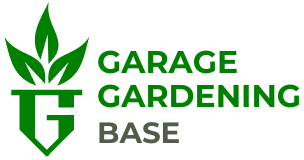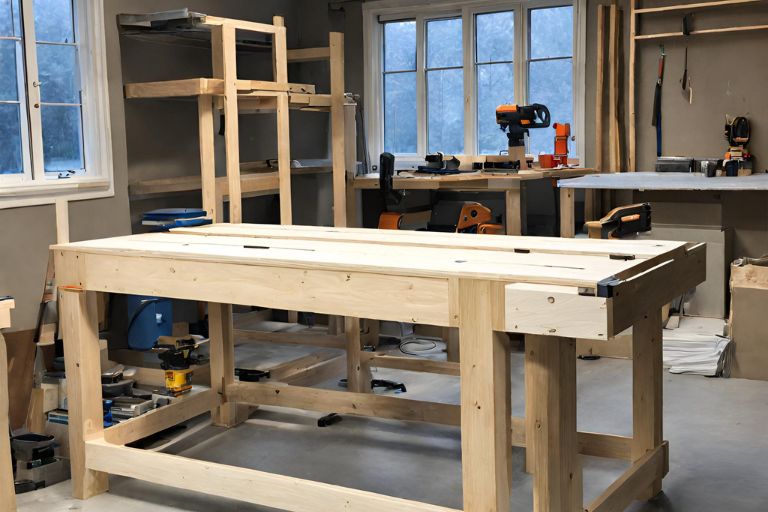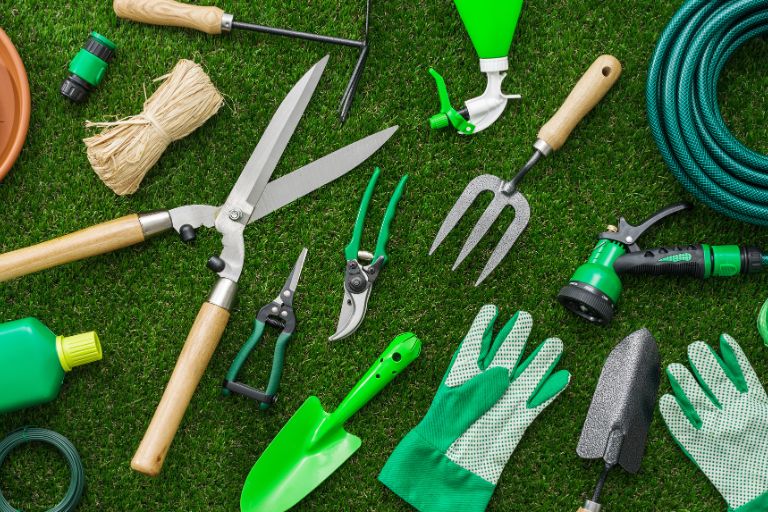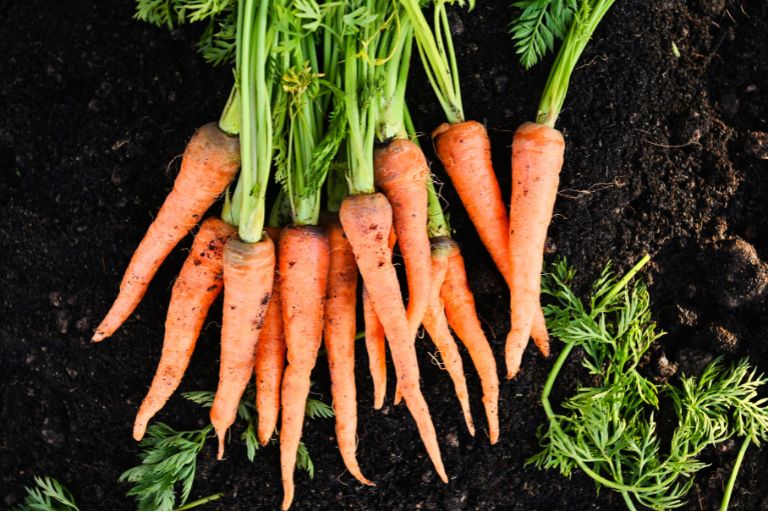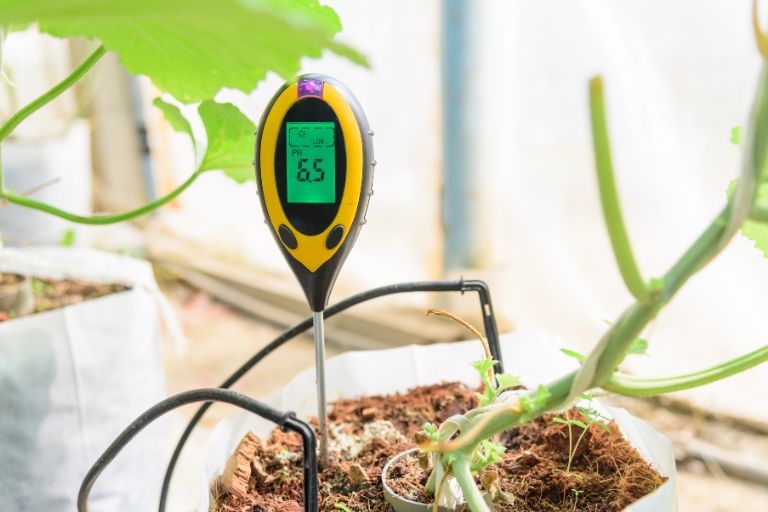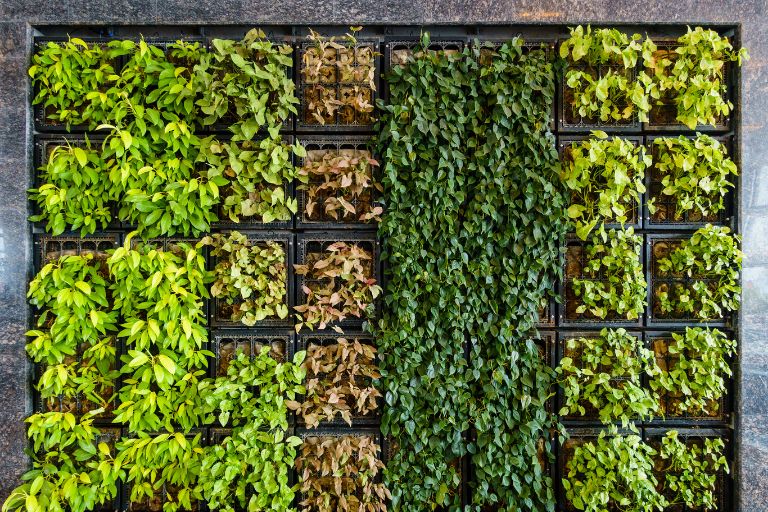Maximising Garden Growth: A Comprehensive Guide to Utilising Grow Lights in Your Garage
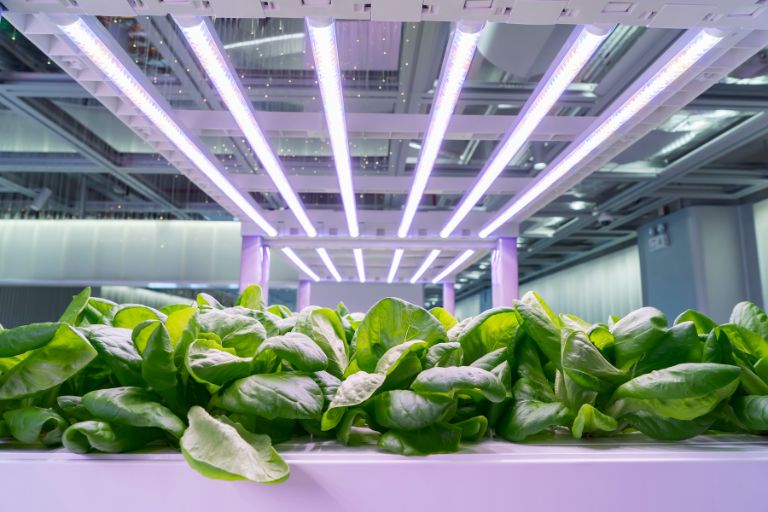
In recent years, the concept of indoor gardening has gained significant traction among enthusiasts and urban dwellers alike. As people increasingly seek ways to reconnect with nature and enjoy the benefits of fresh produce all year round, the versatility and convenience of garage gardening under grow lights has emerged as a popular solution. By harnessing the power of artificial light, gardening enthusiasts can transform their garages into thriving green spaces, growing a wide range of plants, herbs and vegetables regardless of outdoor conditions or space constraints.
The key to successful garage gardening is understanding the principles of plant growth and harnessing the potential of grow lights to create an optimal growing environment. With the right knowledge, techniques and equipment, even the most compact garage spaces can be transformed into vibrant indoor gardens, teeming with life and productivity.
This comprehensive guide is designed to provide gardeners of all levels with the information and tools they need to maximise garden growth using grow lights in their garage. Whether you’re an experienced gardener looking to expand your indoor growing capabilities or a novice just starting out, this guide will provide you with practical insights, expert tips and actionable strategies to create a thriving indoor garden oasis right in your own garage.
Throughout this guide, we’ll explore the different types of grow lights available, including LED, fluorescent and HID, and their respective advantages and disadvantages. We’ll look at the importance of light spectrum, intensity and duration for plant growth, and how to choose the right grow lights based on specific plant needs and space constraints. We’ll also discuss important considerations such as ventilation, temperature and humidity control to create the ideal growing environment under grow lights.
Whether you’re interested in growing herbs, vegetables or ornamental plants, this guide will equip you with the knowledge and confidence to make your garage gardening journey a success. Get ready to unlock the full potential of your garage space and create a thriving indoor garden that brings joy, nourishment and beauty to your home all year round.
Understanding Grow Lights
Listed below is a breakdown of the different types of grow lights, along with their advantages and disadvantages:
Fluorescent Grow Lights
Benefits
Cost-effective – Fluorescent lights are usually more affordable upfront compared to other types of grow lights.
Broad Spectrum – They emit a wide spectrum of light suitable for different stages of plant growth.
Low heat output – Fluorescent lights produce less heat, making them suitable for smaller spaces and delicate plants.
Disadvantages
Lower intensity – Fluorescent lamps have a lower light intensity than other options, which can result in slower growth rates or less robust plants.
Limited range – Due to their lower intensity, fluorescent lamps are best suited for smaller, less demanding plants or as supplementary lighting.
LED (Light Emitting Diode) Grow Lights
Benefits
Energy efficient – LED lights consume less energy than other types of grow lights, resulting in lower electricity bills and reduced environmental impact.
Long life – LED grow lights have a longer lifespan than traditional lighting options, reducing the need for frequent replacement.
Customisable spectrum – LED lights can be tailored to emit specific wavelengths of light optimised for different growth stages and plant types.
Minimal heat output – LED lights produce minimal heat, reducing the risk of heat damage to plants and allowing them to be placed closer together.
Disadvantages
Higher initial cost – LED grow lights tend to have a higher initial cost than other options, but the long-term savings in energy and replacement costs often outweigh this.
Variance in quality – Not all LED grow lights are created equal, and lower quality options may not provide the full spectrum or intensity required for optimal plant growth.
HID (High Intensity Discharge) Grow Lights
Benefits
High Light Intensity – HID lights are renowned for their high light output, making them ideal for promoting vigorous plant growth and maximising yields.
Large area coverage – HID lights can cover larger areas, making them suitable for commercial operations or larger indoor gardens.
Disadvantages
Heat output – HID lights generate significant heat, requiring adequate ventilation and cooling systems to prevent heat stress or damage to plants.
Energy Consumption – HID lights consume more energy than LED lights, resulting in higher electricity costs and potentially greater environmental impact.
Bulb replacement – HID bulbs have a limited lifespan and require regular replacement, adding to the total cost of ownership.
Understanding the importance of light spectrum, intensity and duration is crucial to maximising plant growth under grow lights. Here’s why these factors are important:
Light spectrum
– Different wavelengths of light within the spectrum have different effects on plant growth and development.
– Chlorophyll, the pigment responsible for photosynthesis, absorbs light most efficiently in the blue (400-500nm) and red (600-700nm) spectrums.
– Blue light stimulates vegetative growth, including leaf development and root formation.
– Red light stimulates flowering, fruiting and general plant growth.
– Other wavelengths, such as green and yellow, are also used by plants to a lesser extent, but still play a role in specific physiological processes.
– Providing a balanced spectrum that includes both blue and red wavelengths ensures comprehensive coverage of all stages of plant growth, from seedling to harvest.
Light intensity
– Light intensity refers to the brightness or strength of light reaching plants, measured in units such as lumens or micromoles per square metre per second (µmol/m²/s).
– Adequate light intensity is essential for photosynthesis as it determines the rate at which plants can convert light energy into chemical energy (sugars) for growth and metabolism.
– Inadequate light intensity can result in leggy, weak plants with poor yields, while excessive light intensity can cause light burn or heat stress.
– Light intensity requirements vary between plant species and growth stages, with flowering and fruiting stages typically requiring higher light levels than vegetative growth.
Light duration
– Light duration refers to the length of time plants are exposed to light each day, commonly referred to as the photoperiod.
– Photoperiod influences important plant processes such as flowering, dormancy and growth regulation.
– Most plants require a specific photoperiod to initiate flowering, with long day plants flowering when exposed to longer daylight periods and short day plants flowering when exposed to shorter daylight periods.
– Providing consistent and appropriate light duration is essential to maintain healthy growth cycles and maximise yields.
– Some plants may require adjustments to the photoperiod to induce flowering or to mimic seasonal changes, especially when grown indoors.
Choosing the right grow lights means considering the specific needs of your plants and the constraints of your space. Below is a step-by-step guide to help you make an informed decision:
Determine your plant’s light requirements
– Different plants have different light requirements depending on their natural habitat and stage of growth. Research the specific light requirements of the plants you want to grow, including their preferred light spectrum, intensity and photoperiod.
Assess your space constraints
– Evaluate the size and layout of your growing space, whether it’s a small corner of a room or a dedicated indoor garden area. Consider factors such as ceiling height, available electrical outlets and ventilation options.
Choose the right type of grow light
– Fluorescent lights: These are ideal for small or low-light plants because of their affordability and low heat output. They’re suitable for compact spaces and seed starting.
– LED lights: Versatile and energy efficient, they offer customisable spectral options to suit different plant needs. LED lights are suitable for different growth stages and can be adjusted to suit different space requirements.
– HID Lights: Offer high light intensity and coverage, making them suitable for larger indoor gardens or commercial operations. However, they require more space for installation and can generate more heat.
Consider light coverage and intensity
– Calculate the square footage of your grow area to determine the appropriate light coverage. Ensure that the grow lights you choose can sufficiently cover the entire canopy of your plants.
– Look at the light output of the grow lights you choose to ensure that it meets the specific light requirements of your plants. Look for adjustable lights that allow you to change the intensity as needed.
Consider energy efficiency and longevity
– Choose energy efficient grow lights to minimise electricity costs and reduce environmental impact. LED lights are generally more energy efficient than fluorescent or HID lights.
– Consider the lifespan of the grow lights and the cost of replacement bulbs or fixtures. LED lights typically have a longer lifespan than traditional lighting options, reducing maintenance costs in the long run.
Evaluate additional features and accessories
– Look for grow lights with built-in features such as dimming controls, programmable timers and adjustable spectrums to optimise plant growth and mimic natural sunlight.
– Consider additional accessories such as light hangers, reflectors and light movers to improve light distribution and coverage in your growing area.
Setting up Your Garage Garden
Assessing the space available and designing an efficient layout for optimum light distribution is essential to maximise plant growth and make effective use of grow lights. Below is a step-by-step guide to help you achieve this:
Measure your growing area
– Use a tape measure or ruler to determine the dimensions of your indoor gardening area, including length, width and height. Take into account any obstacles or obstructions that may affect light distribution, such as shelves, furniture or walls.
Determine light source placement
– Determine the location of your grow lights in the grow area. Depending on the type of grow lights you’re using (e.g. pendant, wall mounted), allow for adequate clearance and access for installation and maintenance.
Consider light coverage area
– Calculate the footprint of your grow lights based on their specifications, including light intensity and spread. Ensure that the selected grow lights can adequately cover the entire canopy of your plants, avoiding over- or under-lighting.
Optimise light distribution
– Arrange your plants in a layout that promotes even light distribution and maximises space utilisation. Consider factors such as plant height, growth habits and light requirements when positioning plants within the growing area.
– Taller plants or those with higher light requirements can be placed closer to the light source, while smaller or less light demanding plants can be placed further away or in shaded areas.
– Use reflective surfaces such as white walls, mylar or reflective grow tent materials to redirect and amplify light within the grow area and improve overall light distribution.
Adjust lighting heights and angles
– Fine-tune the height and angle of your grow lights to optimise light penetration and coverage throughout the canopy. Follow the manufacturer’s recommendations for recommended distances between lights and plants, adjusting as necessary based on plant response and stage of growth.
– Consider using adjustable hangers or pulley systems to easily raise or lower lights as plants grow, or to accommodate changes in layout or spacing.
Monitor light levels and plant response
– Regularly monitor light levels and plant response to ensure optimal growing conditions. Use a light meter or smartphone app to measure light levels at different points in the growing area and adjust light placement or intensity accordingly.
– Look for signs of light stress or deficiency in plants, such as leaf discoloration, stretching or stunted growth, and make adjustments as needed to address any problems.
Fine-tune and adjust as needed
– Continually evaluate and fine-tune your layout and light distribution based on plant growth and environmental conditions. Be prepared to adjust your layout as plants mature, spacing requirements change or new crops are introduced.
– Experiment with different layouts, lighting configurations and plant placements to find the most efficient and effective setup for your specific growing space and plant needs.
Creating the ideal growing environment involves more than just providing adequate light. Ventilation, temperature control and humidity regulation are crucial factors to consider in maintaining optimal growing conditions. Here’s a guide to these considerations:
Ventilation
– Proper air circulation is essential for maintaining healthy plants and preventing problems such as mould, mildew and stagnant air.
– Install exhaust fans or ventilation systems to facilitate the exchange of fresh air and remove excess heat, humidity and odours from the grow area.
– Position intake vents near the bottom of the grow area to draw in fresh air, while exhaust vents should be near the top to remove stale air and heat.
– Use oscillating fans in the grow area to improve air circulation around plants, prevent moisture stratification and strengthen plant stems through gentle movement.
Temperature control
– Maintain a consistent temperature range that is conducive to plant growth, typically between 18°C and 24°C (65°F and 75°F) for most common plants.
– Invest in temperature monitoring equipment such as digital thermometers or hygrometers to track temperature and humidity levels in the growing area.
– Install heating or cooling systems as needed to regulate temperatures, especially during extreme weather or seasonal fluctuations.
– Consider using reflective insulation or thermal barriers to help stabilise temperatures and minimise heat loss or gain from external sources.
Humidity control
– Monitor and control humidity levels to prevent problems such as mould, fungal disease and moisture stress in plants.
– Maintain humidity levels between 40% and 60% for most plants during vegetative growth, adjusting as needed to meet specific plant needs.
– Use humidifiers to increase humidity levels in dry environments or during the winter months when indoor air tends to be drier.
– Use dehumidifiers or air conditioners to reduce humidity levels in humid climates or during periods of excessive humidity.
– Use good watering practices, such as using well-draining soil and allowing adequate drying between waterings, to avoid overwatering and minimise moisture-related problems.
Integrated environmental controls
– Consider investing in automated environmental control systems that integrate temperature, humidity and ventilation controls to maintain optimal growing conditions.
– Programmable controllers or smart devices can automate tasks such as adjusting fan speed, activating supplemental heating or cooling, and controlling humidity levels based on pre-set parameters.
– Monitor and adjust environmental conditions regularly, especially during critical growth phases or when external factors such as weather or seasonal changes affect indoor conditions.
When installing grow lights in a garage, it’s important to prioritise safety to avoid electrical and fire hazards. Some safety precautions to follow include:
Use the correct electrical wiring
– Ensure that all electrical wiring and components, including extension cords, power strips and outlets, are rated for the intended use and compatible with the wattage and amperage requirements of the grow lights.
– Use grounded (three-pronged) outlets and avoid overloading circuits by distributing power to multiple outlets as needed.
– Routinely inspect electrical cords and connections for signs of wear, damage or fraying, and replace damaged components immediately to prevent shock or fire hazards.
– Consider using surge protectors or GFCI (ground fault circuit interrupter) outlets to protect against electrical surges and minimise the risk of electrical accidents.
Ensure proper ventilation and heat dissipation
– Install grow lights in a well-ventilated area with sufficient clearance around the fixtures to allow for proper airflow and heat dissipation.
– Place grow lights a safe distance from flammable materials such as insulation, cardboard or flammable liquids to reduce the risk of fire.
– Use heat resistant materials for luminaires and enclosures to minimise the risk of overheating and fire.
Mount grow lights securely
– Ensure grow lights are securely mounted and properly supported to prevent accidental falls or damage.
– Use sturdy mounting hardware and brackets designed for the specific type and weight of grow lights, and follow the manufacturer’s recommendations for installation and positioning.
Implement fire prevention measures
– Keep an electrical fire extinguisher readily accessible in the garage and ensure that all occupants know how to use it properly.
– Avoid overloading electrical circuits by limiting the number of appliances connected to each circuit and using separate circuits for grow lights where possible.
– Regularly inspect grow lights, electrical connections and surrounding areas for signs of overheating, such as burning odours, discoloured fixtures or hot spots, and address any problems immediately.
– Develop and practice an emergency evacuation plan in the event of a fire or other emergency, and ensure that all occupants know how to exit the greenhouse safely and quickly.
Follow manufacturer’s instructions and guidelines
– Always follow the manufacturer’s instructions and guidelines for installation, operation and maintenance of grow lights to ensure safe and proper use.
– Avoid modifying or tampering with electrical components or fittings as this may void the warranty and increase the risk of accidents or malfunctions.

Maximising Plant Growth
Selecting suitable plants for garage gardening under grow lights involves considering factors such as light requirements, space limitations and personal preferences. Some strategies to help you choose the right plants include:
Assess light requirements
– Research the light requirements of different plant species to identify those that thrive indoors and can adapt to artificial lighting conditions.
– Choose plants that are categorised as low to medium light tolerant as they are more suited to growing under grow lights in a garage environment.
– Look for plants that can tolerate a wide range of light conditions or have flexible lighting requirements, allowing them to thrive under varying light intensities and spectrums.
Consider space constraints
– Evaluate the space available in your garage gardening area, including floor space, shelving or vertical structures.
– Choose plants that fit within the available space and can be accommodated by the layout and design of your indoor garden.
– Choose compact or dwarf varieties, or those that can be trained or pruned to control size and growth habit and maximise space.
Prioritise high-yield or multi-purpose plants
– Focus on plants that produce high yields or multiple harvests throughout the growing season to maximise the productivity of your indoor garden.
– Consider growing herbs, salad greens, microgreens or compact fruit crops such as cherry tomatoes, peppers or strawberries that are well-suited to indoor growing and thrive under grow lights.
– Experiment with multifunctional plants that can be used for both ornamental and culinary purposes, such as edible flowers, ornamental herbs or compact fruit trees.
Choose plants with similar requirements
– Choose plants with similar light, water and temperature requirements to simplify care and maintenance.
– Group plants with similar needs in the same growing area to streamline watering, fertilising and pest management practices to optimise efficiency and plant health.
Consider personal preferences and goals
– Consider your personal preferences, gardening interests and culinary tastes when selecting plants for your indoor garden.
– Choose plants that you’ll enjoy growing and using, whether it’s aromatic herbs for cooking, colourful flowers for aesthetics, or nutritious greens for juicing or salads.
– Set specific goals for your garage garden project, such as growing a variety of herbs for culinary experimentation, creating a mini salad garden for fresh greens, or propagating ornamental plants for indoor decoration.
Research plant varieties and cultivars
– Explore a wide range of plant varieties and cultivars suitable for indoor gardening under grow lights, considering factors such as growth habit, flavour profile and disease resistance.
– Seek recommendations from reputable sources such as gardening books, online forums, seed catalogues and local nurseries to discover new and interesting plant options for your indoor garden.
Promoting healthy growth in your garage garden under grow lights requires attention to proper watering, fertilization, and pest management techniques. Some strategies to help you maintain vibrant and thriving plants include:
Proper watering techniques
– Water plants thoroughly, but avoid overwatering as excessive moisture can lead to root rot and other fungal diseases.
– Check soil moisture regularly by inserting your finger into the soil to a depth of about one inch. Water when the top inch of soil feels dry.
– Use a watering can with a fine rose attachment or a gentle spray nozzle to water plants evenly and avoid disturbing the soil or foliage.
– Water early in the day to allow foliage to dry before nightfall and reduce the risk of fungal disease.
– Adjust the frequency and amount of watering according to factors such as plant type, container size and environmental conditions such as temperature and humidity.
Fertilising practices
– Use a balanced, water-soluble fertilizer formulated specifically for houseplants or vegetables and follow the manufacturer’s instructions for application rate and frequency.
– Apply fertiliser sparingly to avoid over-fertilising, which can lead to nutrient imbalances, salt build-up in the soil and plant damage.
– Consider using organic fertiliser or compost tea to provide a slow release source of nutrients and naturally improve soil fertility.
– Monitor plant growth and response to fertiliser and adjust nutrient levels as needed based on visual cues such as leaf colour, size and overall vigour.
Integrated Pest Management (IPM)
– Implement proactive measures to prevent pest infestations, such as maintaining good sanitation practices, regularly inspecting plants for signs of pests or disease, and quarantining new plants before introducing them to your indoor garden.
– Identify common indoor garden pests such as aphids, spider mites, whiteflies and fungus gnats, and learn about their life cycles, habits and natural predators.
– Use mechanical methods such as hand picking, pruning or washing plants with a gentle stream of water to remove pests and their eggs from foliage.
– Consider using natural or organic pest control methods such as neem oil, insecticidal soaps, or beneficial insects such as ladybugs or predatory mites to manage pest populations without harming beneficial insects or pollinators.
– Monitor plants regularly for signs of pest damage, such as distorted leaves, wilting, yellowing or spotting, and take prompt action to treat infestations before they escalate.
Environmental management
– Maintain optimal environmental conditions for plant growth, including proper lighting, temperature, humidity and ventilation to promote overall health and resistance.
– Ensure adequate air circulation around plants to reduce the risk of fungal diseases and pest infestations, and monitor humidity levels to prevent moisture-related problems.
– Monitor and control environmental factors such as temperature fluctuations, air quality and humidity levels using appropriate equipment and techniques such as fans, humidifiers and environmental sensors.
Adjusting lighting schedules and spacing is essential to accommodate the different growth stages and light requirements of different plant varieties. Tailor your lighting setup for optimum growth:
Seed germination and seedling stage
– Provide 16-18 hours of light per day using grow lights with a cooler spectrum rich in blue wavelengths to promote strong root development and healthy seedling growth.
– Position grow lights 2-4 inches above seedlings to provide adequate light intensity without causing light stress or heat damage.
– Adjust the light schedule to include a 6-8 hour dark period at night to mimic the natural day/night cycle and promote healthy growth.
Vegetative growth stage
– Continue to provide 16-18 hours of light per day, but gradually transition to a broader spectrum that includes both blue and red wavelengths to encourage lush foliage growth and branching.
– Maintain a distance of 6-12 inches between grow lights and the plant canopy to ensure even light distribution and prevent light burn.
– Consider using adjustable fixtures or raising the lights as plants grow taller to maintain optimum light intensity and coverage.
Flowering and fruit development stage
– Transition to a light schedule of 12 hours of light followed by 12 hours of darkness to trigger flowering and fruiting in photoperiodic plants.
– Adjust the light spectrum to include more red wavelengths to promote flowering and fruit development.
– Maintain a distance of 12-18 inches between grow lights and the plant canopy to allow for taller growth and prevent light burns on flowers and fruit.
– Monitor plants closely for signs of stress or nutrient deficiencies during the flowering and fruiting stages and adjust lighting, watering and fertiliser as needed to support optimal growth and yield.
Light requirements for specific plant varieties
– Research the specific light requirements of the crop varieties you’re growing, including their preferred light spectrum, intensity and photoperiod.
– Adjust light schedules, spacing and spectra to meet the needs of each crop, taking into account factors such as growth habits, leaf morphology and flowering patterns.
– Group plants with similar light requirements to simplify lighting adjustments and optimise growing conditions for each species or variety.
Monitor and adjust as needed
– Regularly monitor plant growth, health and response to lighting conditions and adjust lighting schedules, spacing and spectra as needed to address problems or optimise growth.
– Keep a gardening journal or log to track lighting schedules, spacing and plant responses over time, allowing you to fine-tune your lighting setup for maximum efficiency and productivity.
Common Issues
Identifying and addressing potential challenges such as light burn, nutrient deficiencies, and pests are essential aspects of successful garage gardening under grow lights. Recognize and manage these issues effectively:
Light burn
Symptoms – Light burn typically manifests itself as yellowing or browning of leaf tips or margins, wilting or bleaching of foliage. Plants may show signs of stress or scorch marks where leaves have been in direct contact with intense light.
Causes – Light burn occurs when plants are exposed to excessive light intensity or placed too close to grow lights without adequate protection or shading.
Solutions – Increase the distance between grow lights and plant canopy to reduce light intensity and minimise the risk of light burn. Install light diffusers, reflective surfaces or shading materials to distribute and diffuse light more evenly and prevent concentrated beams from causing localised damage. Monitor plants closely for signs of stress and adjust light intensity, distance or duration as necessary to prevent further damage.
Nutrient deficiencies
Symptoms: Nutrient deficiencies manifest as stunted growth, yellowing or discoloration of leaves, leaf curling or distortion, and poor overall plant health.
Causes: Nutrient deficiencies can occur when plants do not receive adequate amounts of essential nutrients such as nitrogen, phosphorus, potassium, magnesium or micronutrients such as iron, manganese or calcium.
Solutions: Conduct a soil test or nutrient analysis to identify specific deficiencies and adjust fertilisation accordingly with balanced, water-soluble fertilisers or organic supplements. Maintain proper pH levels in the growing medium to optimise nutrient uptake and availability to plants. Consider using foliar sprays or nutrient solutions applied directly to plant foliage to provide a quick boost of essential nutrients and correct deficiencies more quickly. Monitor plant growth and response to fertilisation and adjust nutrient levels and application rates as necessary to promote healthy growth and development.
Pest infestation
Symptoms: Pest infestations may manifest as visible pests such as aphids, spider mites, whiteflies or fungus gnats on plant foliage, as well as damage to leaves, stems or flowers.
Causes: Pests can be introduced into indoor gardens through contaminated soil, plant material, or airborne pests that enter through ventilation systems or openings.
Solutions: Practice preventive measures such as inspecting new plants before introducing them to the indoor garden, maintaining good sanitation practices, and implementing proper ventilation and air filtration to reduce pest entry.
Monitor plants regularly for signs of pest activity, including pest presence, damage symptoms or abnormal plant behaviour. Use integrated pest management (IPM) strategies such as biological controls (e.g. beneficial insects), mechanical methods (e.g. hand-picking pests), cultural practices (e.g. companion planting), and least toxic chemical controls (e.g. insecticidal soaps, neem oil) to effectively manage pest populations while minimising harm to beneficial insects and the environment. Quarantine affected plants if necessary to prevent the spread of pests to other plants in the indoor garden, and treat infestations promptly to prevent further damage or loss.
Promptly identifying and addressing challenges such as light burn, nutrient deficiencies, and pest infestations, you can maintain a healthy and thriving garage garden under grow lights, ensuring optimal plant growth and productivity throughout the growing season.
Troubleshooting is an essential aspect of maintaining thriving plants under grow lights in a garage environment. Some tips and techniques to help you identify and effectively deal with common problems include:
Monitor plant health regularly
– Inspect your plants regularly to monitor their overall health, growth and development.
– Look for signs of stress such as wilting, yellowing or browning of leaves, leaf curling or distortion, stunted growth or pest infestations.
– Note any changes in plant behaviour or appearance and investigate possible causes immediately.
Assess environmental conditions
– Check environmental factors such as light levels, temperature, humidity and airflow in the growroom.
– Ensure that grow lights are positioned at the correct distance from the plant canopy to prevent light burns or inadequate light exposure.
– Maintain consistent temperatures and humidity levels within the recommended ranges for the plant species you’re growing.
– Monitor ventilation and airflow to prevent stagnant air and reduce the risk of mould, mildew or pest infestation.
Address lighting issues
– Adjust lighting schedules, spacing and spectra as needed to accommodate different growth stages and plant varieties.
– Use light meters or smartphone apps to measure light intensity and ensure plants are receiving adequate light levels for optimal growth.
– Check for proper light distribution and coverage throughout the plant canopy by adjusting light placement or using reflective materials to maximise light absorption.
Correct nutrient deficiencies
– Conduct soil tests or nutrient analyses to identify nutrient deficiencies and adjust fertilisation accordingly.
– Choose balanced, water-soluble fertilisers or organic supplements formulated for indoor plants and follow the recommended application rates and schedules.
– Monitor pH levels in the growing medium and adjust as needed to optimise nutrient uptake and availability for plants.
Manage pest and disease problems
– Inspect crops regularly for signs of pest activity, such as visible pests, damage symptoms or abnormal plant behaviour.
– Use integrated pest management (IPM) strategies to effectively control pest populations, including biological controls, mechanical methods, cultural practices and the least toxic chemical controls.
– Quarantine affected plants if necessary to prevent the spread of pests to other plants in the indoor garden, and treat infestations promptly to minimise damage.
Seek expert advice
– Consult reputable gardening resources, books, online forums or local extension offices for expert advice and troubleshooting tips.
– Talk to experienced indoor gardeners or horticultural professionals about specific problems or challenges you are facing.
Keep records and learn from experience
– Keep a gardening journal or log to track plant growth, environmental conditions, and any troubleshooting efforts or interventions.
– Document successful strategies as well as lessons learned from failures or setbacks to inform future gardening practices and improve your skills as an indoor gardener.

Sustainable Practices
Exploring eco-friendly options for powering grow lights is crucial to minimising environmental impact and reducing energy consumption. Some green options to consider are:
Energy efficient LED grow lights
– LED (Light Emitting Diode) grow lights are highly energy efficient compared to traditional lighting options such as fluorescent or HID (High Intensity Discharge) lights.
– LEDs use less power while producing more light, resulting in lower energy bills and a smaller carbon footprint.
– Choose LED grow lights with Energy Star or High Efficiency ratings to ensure maximum energy savings and performance.
– LED grow lights also have a longer lifespan than traditional lights, reducing the frequency of replacement and minimising waste.
Renewable energy sources
– Consider powering your grow lights with renewable energy sources such as solar or wind to further reduce carbon emissions and dependence on fossil fuels.
– Install solar panels on your garage roof or property to capture sunlight and generate clean, renewable electricity to power your grow lights.
– Check out community solar programmes or renewable energy providers that offer green energy options for residential use.
– In regions with favourable wind conditions, consider installing small wind turbines to generate wind power and offset grow light electricity use.
Energy efficient practices
– Implement energy-efficient practices to reduce overall energy consumption and optimise lighting efficiency in your garage garden.
– Use programmable timers or smart lighting controls to automate lighting schedules and ensure grow lights are only on when needed.
– Optimise light intensity, spectrum and duration based on plant growth stages and specific requirements to minimise energy waste and maximise plant productivity.
– Use reflective surfaces or materials in your growroom to improve light distribution and reduce the need for additional luminaires.
Energy audits and efficiency improvements
– Conduct an energy audit of your greenhouse to identify areas for improvement and potential energy savings.
– Retrofit existing luminaires with energy-efficient LED bulbs or fixtures to reduce power consumption and improve lighting performance.
– Seal air leaks, improve insulation and upgrade ventilation systems to optimise energy efficiency and create a more sustainable indoor gardening environment.
Offset your carbon footprint
– Consider participating in carbon offset programmes or initiatives to offset the carbon emissions associated with the energy consumption of grow lights.
– Support reforestation projects, renewable energy development or carbon capture and storage initiatives to offset greenhouse gas emissions and contribute to global climate change mitigation efforts.
By adopting green options such as energy efficient LED grow lights, renewable energy sources, energy efficient practices and efficiency upgrades, you can minimise your impact on the environment and create a more sustainable indoor gardening setup in your garage.
Incorporating sustainable gardening practices such as composting and water conservation into your garage gardening efforts can help reduce environmental impact, conserve resources and promote healthy, thriving plants. Below is a guide on how to incorporate these practices effectively:
Compost
– Set up a composting system in your garage or outdoor space to turn organic waste such as kitchen scraps, yard trimmings and plant debris into nutrient-rich compost.
– Use compost as a natural soil amendment to improve soil structure, fertility and moisture retention in container gardens or raised beds.
– Collect kitchen waste such as fruit and vegetable peels, coffee grounds, egg shells and non-dairy food waste in a compost bin or pile.
– Layer green (nitrogen-rich) and brown (carbon-rich) materials in the compost pile to maintain a proper balance and facilitate decomposition.
– Turn the compost pile regularly to aerate and speed up decomposition and ensure that the organic material breaks down efficiently.
– Apply finished compost to garden beds, containers or potting mixes to enrich the soil and provide essential nutrients for plant growth.
Water conservation
– Implement water-saving techniques and practices to minimise water use and optimise irrigation efficiency in your garage garden.
– Choose water-efficient irrigation methods such as drip irrigation, soaker hoses or micro-sprinklers to deliver water directly to the root zone of plants and minimise evaporation.
– Install a rain barrel or collect rainwater from gutters and downspouts to supplement irrigation needs and reduce reliance on municipal water sources.
– Mulch beds and containers with organic materials such as compost, straw or wood chips to retain soil moisture, suppress weeds and reduce evaporation.
– Group plants with similar water needs to streamline watering and avoid over- or underwatering.
– Use moisture sensors or soil moisture meters to monitor soil moisture levels and adjust watering frequency and duration based on plant needs and environmental conditions.
– Incorporate drought-tolerant plants and native species into your garage garden design to reduce water demand and conserve resources.
Sustainable garden design
– Plan and design your garage garden with sustainability in mind, considering factors such as water efficiency, resource conservation and biodiversity.
– Choose eco-friendly materials for garden structures, containers and landscaping, such as reclaimed wood, recycled plastic or natural stone.
– Create habitats and wildlife-friendly features such as pollinator gardens, bird feeders or insect hotels to encourage beneficial insects, birds and other wildlife in your garden.
– Practice crop rotation, companion planting and intercropping to improve soil health, pest management and biodiversity while maximising space utilisation and productivity.
– Use organic gardening principles and minimise the use of synthetic fertilisers, pesticides and herbicides to protect soil and water quality, promote ecosystem health and reduce chemical exposure.
Garage gardening under grow lights offers gardening enthusiasts an exciting opportunity to cultivate lush, thriving gardens regardless of outdoor restrictions or space constraints. By harnessing the power of artificial light, gardeners can create optimal growing environments right in their own garages, allowing for the year-round cultivation of a wide variety of plants, herbs and vegetables.
Throughout this comprehensive guide, we’ve covered the basics of using grow lights in garage gardening, from understanding the different types of grow lights and their respective benefits, to implementing proper lighting techniques and environmental controls. We’ve discussed essential considerations such as light spectrum, intensity and duration, as well as strategies for maximising space, promoting healthy growth and troubleshooting common challenges.
As you embark on your garage gardening journey, remember that success lies in patience, experimentation and continuous learning. Take the opportunity to explore new plant varieties, experiment with different lighting setups and fine-tune your gardening techniques to create a personalised indoor oasis that reflects your passion and creativity.
